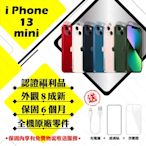搜尋結果
 $21978Apple iPhone 13 128G 6.1吋 5G 蘋果智慧型手機購物中心
$21978Apple iPhone 13 128G 6.1吋 5G 蘋果智慧型手機購物中心 $17245【Apple 蘋果】福利品 iPhone 13 mini 128G 5.4吋 保固12個月 手機醫生官方認證購物中心
$17245【Apple 蘋果】福利品 iPhone 13 mini 128G 5.4吋 保固12個月 手機醫生官方認證購物中心 $27961$29432【Apple 蘋果】福利品 iPhone 13 Pro Max 512G 6.7吋 保固12個月 手機醫生官方認證購物中心
$27961$29432【Apple 蘋果】福利品 iPhone 13 Pro Max 512G 6.7吋 保固12個月 手機醫生官方認證購物中心 $12990$13673【Apple 蘋果】A級福利品 iPhone 13 MINI 128G 5.4吋 智慧型手機(外觀8成新+全機原廠零件)購物中心
$12990$13673【Apple 蘋果】A級福利品 iPhone 13 MINI 128G 5.4吋 智慧型手機(外觀8成新+全機原廠零件)購物中心![【Apple 蘋果】福利品 iPhone 13 Pro Max 256G 6.7吋 保固12個月 手機醫生官方認證 【Apple 蘋果】福利品 iPhone 13 Pro Max 256G 6.7吋 保固12個月 手機醫生官方認證]() $26545$27942【Apple 蘋果】福利品 iPhone 13 Pro Max 256G 6.7吋 保固12個月 手機醫生官方認證購物中心
$26545$27942【Apple 蘋果】福利品 iPhone 13 Pro Max 256G 6.7吋 保固12個月 手機醫生官方認證購物中心![【Apple 蘋果】A級福利品 iPhone 13 256GB 6.1吋 智慧型手機(外觀8成新+全機原廠零件) 【Apple 蘋果】A級福利品 iPhone 13 256GB 6.1吋 智慧型手機(外觀8成新+全機原廠零件)]() $14990$15778【Apple 蘋果】A級福利品 iPhone 13 256GB 6.1吋 智慧型手機(外觀8成新+全機原廠零件)購物中心
$14990$15778【Apple 蘋果】A級福利品 iPhone 13 256GB 6.1吋 智慧型手機(外觀8成新+全機原廠零件)購物中心![【Apple 蘋果】A級福利品 iPhone 13 MINI 256G 5.4吋 智慧型手機(外觀8成新+全機原廠零件) 【Apple 蘋果】A級福利品 iPhone 13 MINI 256G 5.4吋 智慧型手機(外觀8成新+全機原廠零件)]() $14490$15252【Apple 蘋果】A級福利品 iPhone 13 MINI 256G 5.4吋 智慧型手機(外觀8成新+全機原廠零件)購物中心
$14490$15252【Apple 蘋果】A級福利品 iPhone 13 MINI 256G 5.4吋 智慧型手機(外觀8成新+全機原廠零件)購物中心![【Apple 蘋果】A級福利品 iPhone 13 128GB 6.1吋 智慧型手機(外觀9成新+全機原廠零件) 【Apple 蘋果】A級福利品 iPhone 13 128GB 6.1吋 智慧型手機(外觀9成新+全機原廠零件)]() $13990$14726【Apple 蘋果】A級福利品 iPhone 13 128GB 6.1吋 智慧型手機(外觀9成新+全機原廠零件)購物中心
$13990$14726【Apple 蘋果】A級福利品 iPhone 13 128GB 6.1吋 智慧型手機(外觀9成新+全機原廠零件)購物中心![【Apple 蘋果】A級福利品 iPhone 13 128GB 6.1吋 智慧型手機(外觀8成新+全機原廠零件) 【Apple 蘋果】A級福利品 iPhone 13 128GB 6.1吋 智慧型手機(外觀8成新+全機原廠零件)]() $13490$14200【Apple 蘋果】A級福利品 iPhone 13 128GB 6.1吋 智慧型手機(外觀8成新+全機原廠零件)購物中心
$13490$14200【Apple 蘋果】A級福利品 iPhone 13 128GB 6.1吋 智慧型手機(外觀8成新+全機原廠零件)購物中心![【福利品】Apple iPhone13 256G 贈原廠快充頭 保固90天 【福利品】Apple iPhone13 256G 贈原廠快充頭 保固90天]() $16790【福利品】Apple iPhone13 256G 贈原廠快充頭 保固90天購物中心
$16790【福利品】Apple iPhone13 256G 贈原廠快充頭 保固90天購物中心![【福利品】Apple iPhone13 PRO MAX 512G 贈原廠快充頭 【福利品】Apple iPhone13 PRO MAX 512G 贈原廠快充頭]() $26990【福利品】Apple iPhone13 PRO MAX 512G 贈原廠快充頭購物中心
$26990【福利品】Apple iPhone13 PRO MAX 512G 贈原廠快充頭購物中心![【福利品】Apple iPhone13 Pro 512G 贈多樣配件 【福利品】Apple iPhone13 Pro 512G 贈多樣配件]() $23490【福利品】Apple iPhone13 Pro 512G 贈多樣配件購物中心
$23490【福利品】Apple iPhone13 Pro 512G 贈多樣配件購物中心
Another independent study concluded that the iPhone 6s created 57% more CO2 than the iPhone 4s. And despite the recycling programs run by Apple and others, “based on our research and other sources, currently less than 1% of smartphones are being recycled,” Lotfi Belkhir, the study’s lead author, tells me."
Trexa - P2P Foundation. URL = http://www.trexa.com/ Description. From Gizmag: "Trexa has revealed details of a lithium-powered, all-wheel vehicle development platform that will enable engineers and developers to create custom "vehicle apps", doing for builders of electric vehicles what the iPhone did for application developers.
其他人也問了
What is a new iPhone 13?
Was ist das iPhone 13?
When was the iPhone 13 first released?
2018年10月12日 · Description. As mentioned in the Pando white-paper the aim of this project is to : “Offer a distributed cooperation, distribution and valuation infrastructure to Commons Creative Contents (CCC) i.e. any kind of content produced through an open process such as - but not restricted to: Open Source Software, Books licensed under Creative Commons ...
- Description
- Characteristics
- Example
- Discussion
- More Information
From the Wikipedia: "Shanzhai (simplified Chinese: 山寨; pinyin: shānzhài) (alternative spelling shanzai or even shan zhai) refers to Chinese imitation and pirated brands and goods, particularly electronics. Literally "mountain village" or "mountain stronghold", the term refers to the mountain stockades of warlords or thieves, far away from official ...
Conditions for Situated Production
Tom Igoe: "Situated production wouldn’t be possible without the following: Cheap tools.Laser cutters, lathes, and milling machines that are affordable by an individual or a group. This is increasingly coming true. The number of colleagues I know who have laser cutters and mills in their living rooms is increasing (and their asthma is worsening, no doubt). There are some notable holes in the open hardware world that exist partially because the tools aren’t there. Cheap injection molding doesn’...
The Shanzai Rules
Lyn Jeffery: 1) Design nothing from scratch; rather, build on the best of what others have already done. 2) Innovate the production process for speed and small-scale cost savings. 3) Share as much information as you can to make it easy for others to add value to your process. 4) Don’t make it until you’ve already got a buyer. 5) Act responsibly within the supply chain. Bunnie Huang on the Shanzhai Rules (response) 1) Buy low, sell high -- and time counts as money. No holds barred. 2) Confuciu...
Gongkai: the Chinese 'reciprocal' way of sharing IP
Bunnie: "About a year and a half ago, I wrote about a $12 “Gongkai” cell phone (pictured above) that I stumbled across in the markets of Shenzhen, China. My most striking impression was that Chinese entrepreneurs had relatively unfettered access to cutting-edge technology, enabling start-ups to innovate while bootstrapping. Meanwhile, Western entrepreneurs often find themselves trapped in a spiderweb of IP frameworks, spending more money on lawyers than on tooling. Further investigation taugh...
"The use of "shanzhai" became popular with the outstanding sale performance of "shanzhai" cell phones. According to Gartner’s data, 1.15 billion cell phones were sold worldwide in 2007, and according to data provided by the Chinese government, 150 million "Shanzhai" cell phones were sold in the same year, thus making up more than one tenth of the g...
See Kevin Carson at http://blog.p2pfoundation.net/shanzhai-flexible-manufacturing-for-the-next-generation/2009/09/28
how Shenzhen became the primary manufacturing region of the world through the practice of shared IP, a Wired documentary at https://www.youtube.com/watch?v=SGJ5cZnoodY
The researchers found that smartphones with larger screens have a measurably worse carbon footprint than their smaller ancestors. Apple has publicly disclosed that building an iPhone 7 Plus creates roughly 10% more CO2 than the iPhone 6s, but an iPhone 7
Collapse OS is a new open source operating system built specifically for use during humanity's darkest days. According to its creator, software developer Virgil Dupras, Collapse OS is what the people of the future will need to reconfigure their scavenged iPhones
While the concept is nuanced, the basic point of technological deflation is that technological things (like, say, iPhones) have the funny habit of becoming “almost free” very quickly. Remember that fancy new iPhone 6 you bought for $600 back in 2013?








